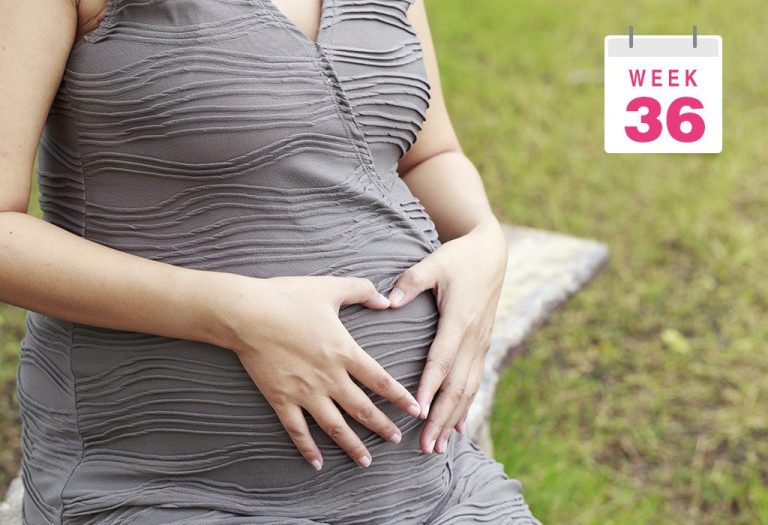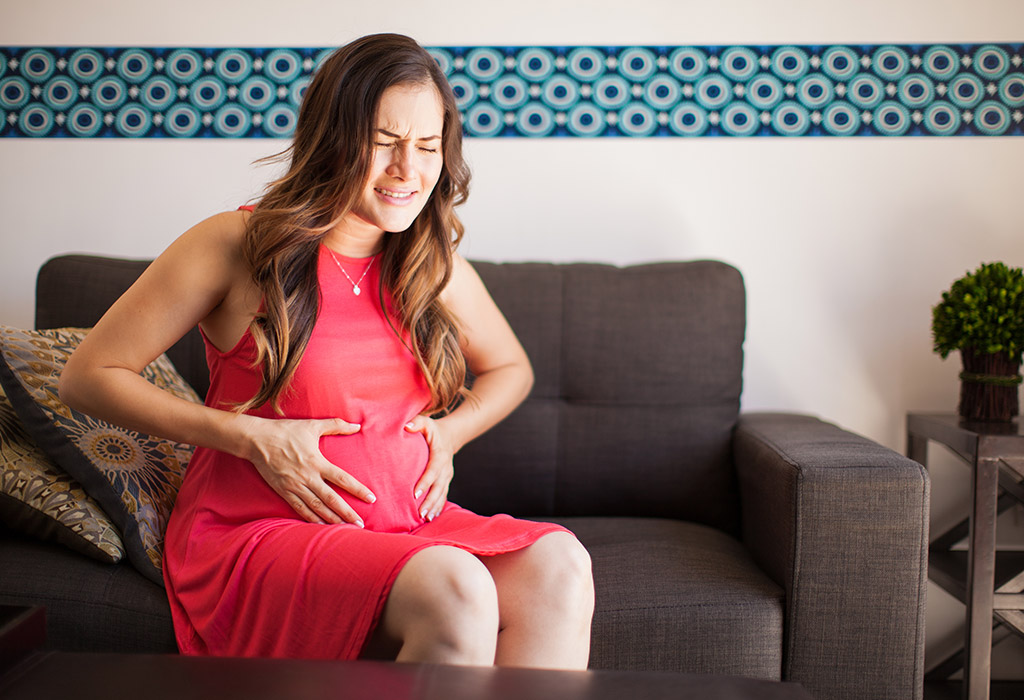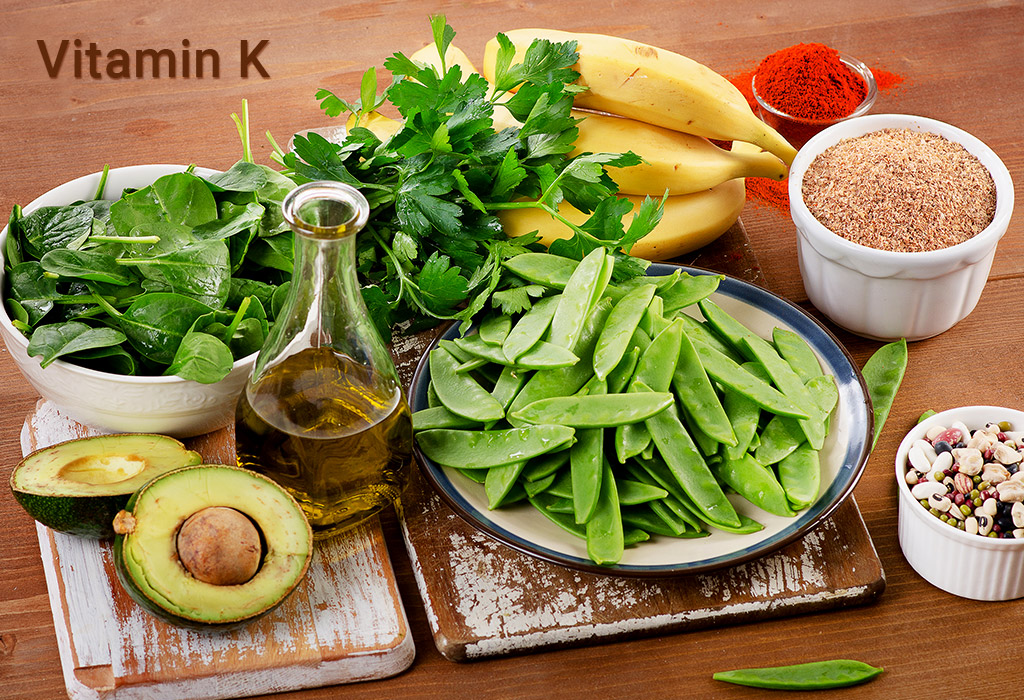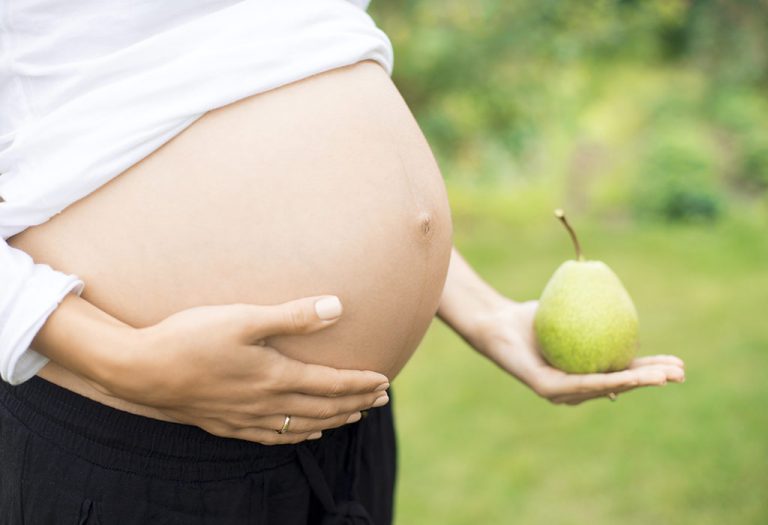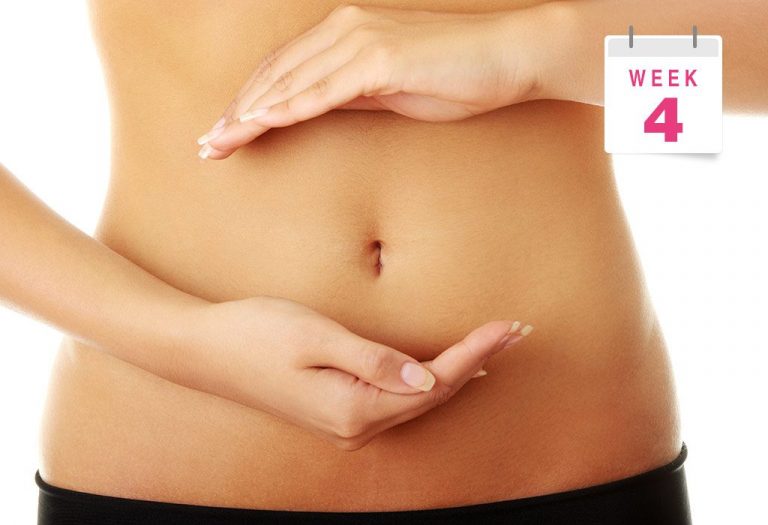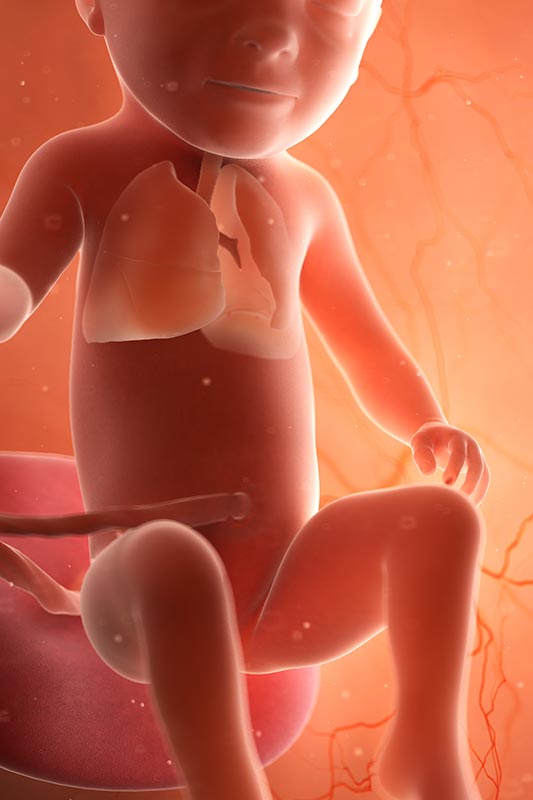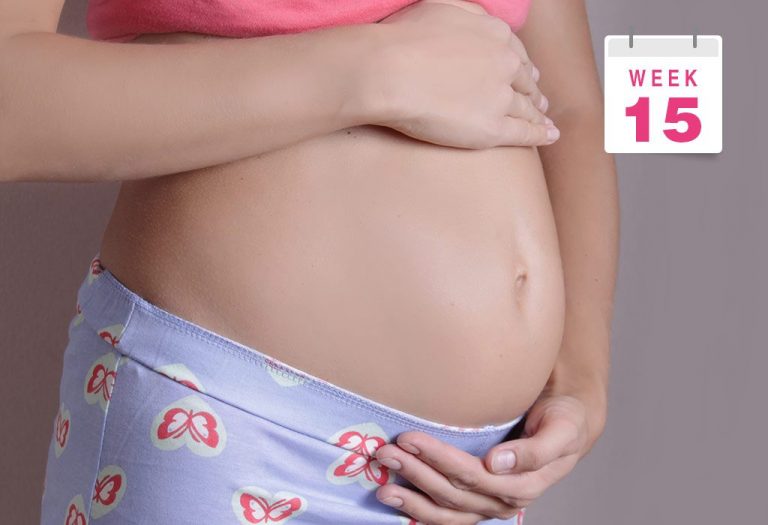36 Weeks Pregnant: Symptoms, Fetal Movement, Body Changes

‘Heavily pregnant’ – that’s how you would describe yourself during the 36th week of pregnancy as you near the finishing line of this nine-month-long marathon! Your little one’s hearing senses have sharpened, and they now hear much better, all the while dropping lower into the pelvis. While your baby is very much a personality on its own now, your body has undergone a host of changes during these weeks, and not all of these are pleasant. During this 36-week gestation period, you may find more flexibility in joints as hormones kick in for labour prep. To stay ahead, check for anything you missed putting in your hospital bag earlier, and even start looking for a paediatrician.
Your Baby’s Growth During Pregnancy – Week 36
Your baby is rapidly growing and gaining weight at almost an ounce (28 grams) every day, gaining nourishment from all the wonderfully nutritious food that you eat throughout the day. All the hair that covered the baby has mostly been shed, and the wax-like substance that has protected its skin has worn off, too. The baby’s nervous system, reproductive organs, and lungs continue to develop, and the bones continue to harden (1). In addition, their skull bones are not fused together yet so that the baby’s head can pass through the birth canal (2).
36 Week Is How Many Months of Pregnancy?
At 36th week of pregnancy, you have reached the ninth-month mark in your pregnancy. Hurray! With only four weeks left until your due date, you’re almost there. Keep in mind that pregnancy lasts 40 weeks, which is slightly longer than the typical nine months people often believe it to be.
What Is the Baby’s Size at 36 Weeks?
When you are 36 weeks pregnant, the size of the baby, when measured from crown to feet, is about a foot and a half, and it is growing and occupying more space as the weeks go by. The baby weighs about 6 pounds (2.7 to 3.1 kg) (2). It also loses its wrinkles as the body fills up and gets chubby by the day. At this stage, there is a huge likelihood that your baby has moved head-down. In some cases, however, the baby fails to turn. This is called the ‘breech position (3).’ According to a 2019 study, about 97% of babies shift into the head-down position toward the birth canal to prepare for birth after 37 weeks, whereas 3-4% of term pregnancies stay breeched (4) (5). Although breech babies can be delivered vaginally, most doctors prefer to perform a C-section if the baby still hasn’t turned when labour starts. According to the American College of Obstetricians and Gynecologists (ACOG), the end of 36 weeks, i.e., 37 to 38 weeks of gestation, is considered ‘early term’ and 39 to 40 weeks of pregnancy is considered ‘full term.’ (6)
Common Body Changes
At this stage, you may feel that there is no more room for the baby to grow, but remember that it continues to grow till the due date. You will have gained at least 24 to 36 pounds (11 to 16 kg) by the 36th week, which is quite normal. If you notice swelling in your face, hands, ankles, and feet or sudden weight gain, give your doctor a call, as this could indicate preeclampsia. This is a pregnancy complication which leads to high blood pressure, swelling in the hands and feet, and a high amount of protein in the urine. It needs immediate medical attention (7).
A feeling of tiredness will prevail in you during this time. Apart from these body changes during pregnancy, you can expect a feeling of anxiety and growing exhaustion from carrying your baby around for almost 9 months now.
Symptoms of Pregnancy at Week 36
Contractions are the symptoms that you will have to look out for in week 36. It could be a case of Braxton-Hicks contractions, which occur before actual labour, or your baby may have decided to announce its arrival early. Other symptoms, such as constipation, gas, discomfort in ribs, swollen and bleeding gums, stretch marks, sleeping issues, backache, feeling hot, and heartburn, will be quite similar to all those you are already familiar with in the third trimester (3).
- Breast Leakage: You could experience a thin, yellowish fluid leaking through your breasts during this period. This fluid is known as colostrum. It provides nutrition to the baby during its first few days. Put breast pads in your bra to absorb the leakage (8).
- Contractions: If your baby decides to make an early date with you, be on the lookout for contractions. These contractions feel like the tightening of the uterus, and at times, in the back, too, and feel just like menstrual cramps. These 36-week pregnant cramping could be Braxton-Hicks contractions (false labour), too. Pay attention to note if the contractions are growing in intensity, peaking, and then subsiding, as this could then be the real thing.
- Frequent Urination: As the baby descends into the pelvis, the pressure on your bladder will increase, and this means more frequent trips to the bathroom. While this is something you have been dealing with throughout pregnancy, it is likely to get worse at this stage, sometimes involuntary leaking (9).
Apart from these, heartburn and general fatigue are common symptoms during week 36.
Belly at 36 Weeks of Pregnancy
Your belly will have a feeling of fullness throughout this week as your baby has now grown larger and is getting cramped for space. If you feel that the pattern of the baby’s movements has changed, though not slowed down, this is because it does not have access to as much space as earlier. What you will feel now will be sharp jabs or kicks rather than gentle movements. If you perceive any slow-down, it is important to try and trigger movement by drinking something cold or pressing the belly lightly. If the movements do not pick up, this may signal a problem, and it is advisable to contact your doctor, who will then monitor the baby’s heartbeat and health.
At this time, the baby is ready to ‘drop’ into your pelvic cavity. This will induce a feeling of lightness as the uterus’s pressure on the diaphragm is reduced considerably. Your protruding belly will make it difficult for you to walk, but this discomfort can be reduced considerably by using a belly sling for support.
As the skin on your belly is stretched to the maximum, the itchiness you have been experiencing is likely to get worse. Combined with the surge of hormones, the skin becomes dry and uncomfortable. Make sure you moisturise regularly and take a warm oatmeal bath occasionally. A cold pack is a great remedy for an itchy belly, too!
36 Weeks Ultrasound
By week 36, your wait is almost over, and you can get ready to meet your baby. Technology helps eager parents like you to take one more look at the baby before it announces its highly-awaited arrival in your world, and this is known as an ultrasound scan. This technique allows doctors to gauge the baby’s size and position just before it comes out. Ultrasounds are safer than X-rays, as they do not expose the baby to radiation and top the list amongst prenatal tests. You could also ask for a 3D image and see what your baby actually looks like.
One important test that is performed this week is the Group B Strep (GBS) test. A bacteria which is commonly found in the vagina of healthy women, GBS can be transferred to the baby during labour. It is thus important to screen for it and take remedial action if needed. The testing is done by examining a vaginal swab or through a urine test. GBS in pregnant women is treated with oral antibiotics or by administering antibiotics intravenously during labour.
What to Eat
During the 36th week of pregnancy, food choices may well be the last thing on your mind as life becomes increasingly chaotic and anxiety-driven. However, a healthy diet is necessary to help your baby gain the right weight and imbibe the desired nutrients. You may find that eating large quantities of your favourite food may be difficult, which is quite the case with other mothers-to-be, too. Split your meals into 5 to 6 smaller meals to get the essential nutrition needed and pass it on to your baby. Make sure you are well-hydrated by drinking fluids. This is necessary to maintain circulatory volume to prepare for labour.
Avoid rich and spicy foods, chocolate, and citrus fruits. Include spinach (palak), fenugreek (methi), cauliflower, broccoli (green gobi), fruits like grapes, figs (anjeer), and pomegranate in your diet. Include rich sources of vitamin K, as the baby’s first feed – colostrum – is full of it. Vitamin K also helps to heal wounds and plays a major role in strengthening your baby’s bones.
Tips & Care
Check out the following tips and things to do and not to do in your 36th week of pregnancy (10):
Dos
- Pick your baby’s paediatrician (it is generally someone from the clinic where you deliver the baby), as the baby will be checked as soon as it is delivered.
- Wear gloves and face masks while handling cleaning liquids, phenyls, and other chemicals during cleaning or washing.
- Decide where you want to give birth and be prepared to leave at a moment’s notice. Whether you decide to have a home birth or a hospital birth, you will need assistance as soon as you go into labour. Keep the phone number of your emergency contact handy, and put together a hospital bag for yourself and the baby.
- Read up on how to recognise signs of labour and how to prepare for it. The best way to do it is by joining a prenatal class, as it not only prepares you for labour but also gives you an idea of newborn care.
Don’ts
- Never work in closed rooms without proper ventilation, as this could trigger panic attacks.
- Do not skip meals. Get all the necessary nutrients that the baby needs in its last few days inside the womb.
- Avoid tobacco, cigarette smoke, sodas, and caffeine, as they stimulate the heart and the brain and could be detrimental to the baby’s health.
What You Need to Shop For
At the due date nears, most expectant mothers and equally eager fathers rush to the nearest mom-and-baby store and begin shopping in earnest. However, shop sensibly and in good time, and do not buy things that may not be immediately needed. Here is a list to help you plan:
- Breast pump: Consider buying a breast pump so it can be handy in case it is needed right after the delivery.
- Nursing gear: Nursing bras and a nursing cover-up are important items that should be on your shopping list. Maternity lingerie is an important aspect during pregnancy and shouldn’t be overlooked. Check out Bella Mama’s range of maternity kurtis, which are extremely comfortable and perfect for a casual outing.
- Sanitary pads: Sanitary pads are necessary if you don’t want to use the ones provided by the hospital.
- Baby gear: A baby stroller is another thing that you will need sooner or later, along with an infant car seat. Put them on your list.
- Announcements: Get thank-you cards to announce the new arrival to all those who attended and made your baby shower a hit and for those who supported you throughout your pregnancy.
When to Call a Doctor
Here are the following situations when you should contact your doctor without any delay:
- With your baby taking up most of the room in your belly, they’ll still move, even though slowly. if you feel a decrease in the movement of your baby, like fewer than 10 movements per hour, contact your doctor. Your doctor may diagnose whether the slowed or less baby’s movements are normal or due to some issue like the baby being in distress.
- If you feel like beginning your contractions or think you are having them, it’s best to head to the hospital or call your doctor.
- If you experience colourless and odourless fluid leakage, vaginal bleeding, or stomach pain, don’t waste time and head to the nearby hospital or contact your doctor.
FAQs
1. Can I deliver at 36 weeks?
Babies at 36 weeks are considered preterm, and birth at 36 weeks or before 37-39 weeks will be considered premature birth. While it is best to wait for babies to fully mature, some pregnancy cases require premature birth. Although the risk reduces after 36 weeks, there may be some health concerns that late preterm babies might be at risk of:
- Neurodevelopmental delays
- Respiratory troubles
- Hyperbilirubinemia
- Low blood sugar
- Feeding difficulties
- Temperature instability
It is best to consult any risk or health issues with your doctor so they can devise an ideal birth plan.
2. What should I do if I experience signs of labour at 36 weeks?
If you think you might be in labour at 36 weeks, call your doctor or go directly to the labour and delivery unit for a check-up. Preterm labour signs include experiencing contractions six or more times in one hour, cramping in the lower abdomen, noticing a change or increase in vaginal discharge, feeling pressure in the pelvis as if the baby is pushing down, experiencing a dull backache below the waist, or abdominal cramping that may or may not be accompanied by diarrhoea. Keep in mind that a baby is not deemed full term until reaching 37 weeks of gestation, so it’s crucial to take any signs of preterm labour seriously and seek an assessment from a doctor as soon as possible.
3. Can I go into labour at 36 weeks of pregnancy?
The National Vital Statistics state that approximately 7 per cent of childbirth in the U.S. happens at 34 to 36 weeks, which are considered premature births (11). Women who have had a history of preterm birth, are pregnant with multiple babies, with certain medical conditions are likely to have early delivery (12).
4. Can I deliver my twin babies at 36 weeks?
If you are 36 weeks pregnant with twins, you will have a huge belly and have probably gained about 35 to 45 pounds by now. There are many cases where pregnant women deliver twins at 36 weeks, but you can still hold on for more weeks, and this will ensure fewer chances of NICU time for your twins after birth. This week, you may have your biophysical profile as well.
The third trimester is a critical period for both the mother and the baby, and hence, it is important to take the right steps to maintain and enhance your physical and mental health. A happy and joyful mother will have a stress-free delivery, so it is important for you to stay relaxed and focused.
References/Resources:
1. How Your Fetus Grows During Pregnancy; ACOG; https://www.acog.org/womens-health/faqs/how-your-fetus-grows-during-pregnancy
2. 36 Weeks Pregnant; American Pregnancy Association; https://americanpregnancy.org/healthy-pregnancy/week-by-week/36-weeks-pregnant/
3. Week 36; NHS; https://www.nhs.uk/start-for-life/pregnancy/week-by-week-guide-to-pregnancy/3rd-trimester/week-36/
4. Toijonen. A. E, Heinonen. S. T, et al.; A comparison of risk factors for breech presentation in preterm and term labor: a nationwide, population-based case-control study; Arch Gynecol Obstet.; PubMed Central; https://pmc.ncbi.nlm.nih.gov/articles/PMC7033046/; February 2020
5. Gray. C. J, Shanahan. M. M; Breech Presentation; StatPearls Publishing; https://www.ncbi.nlm.nih.gov/books/NBK448063/
6. Definition of Term Pregnancy; ACOG; https://www.acog.org/clinical/clinical-guidance/committee-opinion/articles/2013/11/definition-of-term-pregnancy
7. Swollen ankles, feet and fingers in pregnancy; NHS; https://www.nhs.uk/pregnancy/related-conditions/common-symptoms/swollen-ankles-feet-and-fingers/
8. Leaking from your nipples; NHS; https://www.nhs.uk/pregnancy/related-conditions/common-symptoms/leaking-nipples/
9. 36 weeks pregnant: baby’s development, common symptoms and pain relief in labour; Tommy’s; https://www.tommys.org/pregnancy-information/im-pregnant/pregnancy-week-by-week/36-weeks-pregnant
10. Pregnancy at 35 to 38 Weeks; Drugs.com; https://www.drugs.com/cg/pregnancy-at-35-to-38-weeks.html
11. Martin. J. A, et al.; Births: Final Data for 2017; National Vital Statistics Reports; https://www.cdc.gov/nchs/data/nvsr/nvsr67/nvsr67_08-508.pdf; November 2018
12. What are the risk factors for preterm labor and birth?; NIH; https://www.nichd.nih.gov/health/topics/preterm/conditioninfo/who_risk
Previous Week: 35 Weeks Pregnant
Next Week: 37 Weeks Pregnant
Was This Article Helpful?
Parenting is a huge responsibility, for you as a caregiver, but also for us as a parenting content platform. We understand that and take our responsibility of creating credible content seriously. FirstCry Parenting articles are written and published only after extensive research using factually sound references to deliver quality content that is accurate, validated by experts, and completely reliable. To understand how we go about creating content that is credible, read our editorial policy here.






